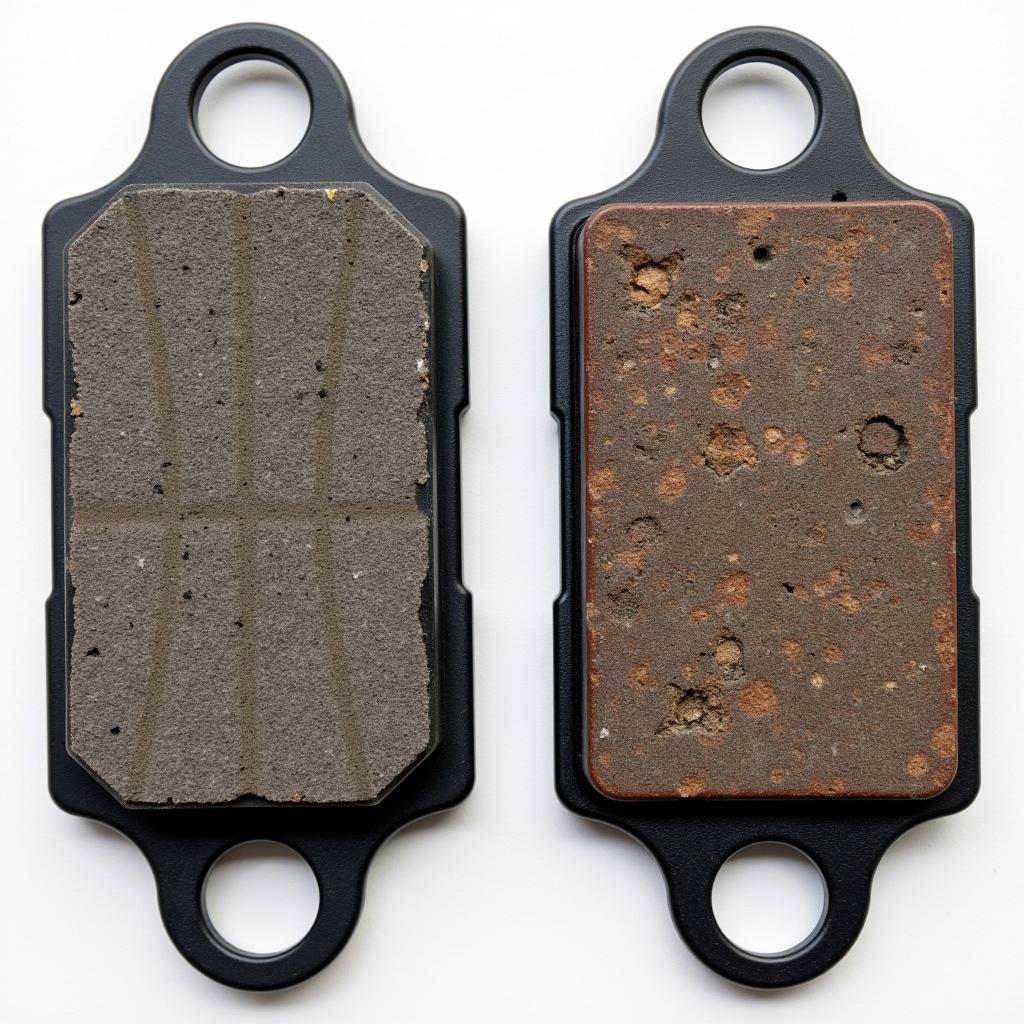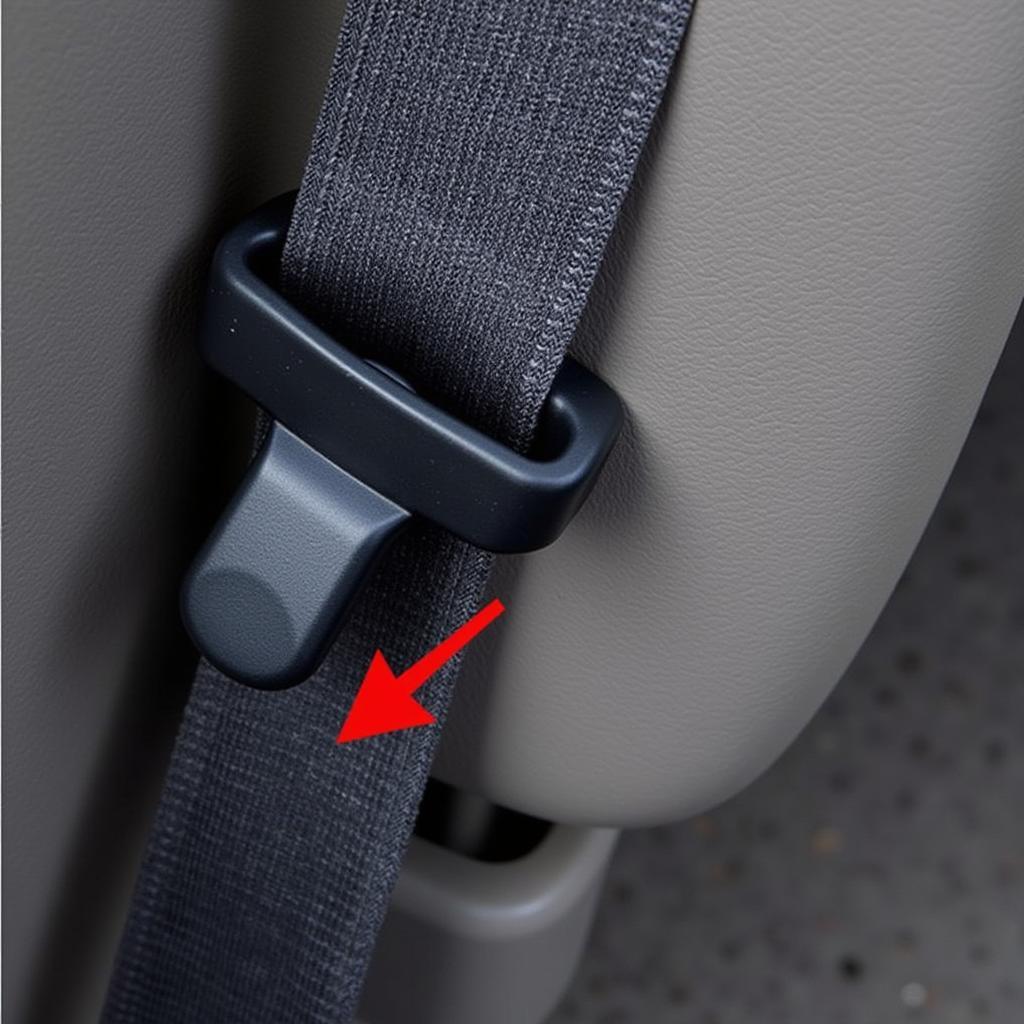Understanding when your BMW’s brake pad warning light comes on is crucial for maintaining safe braking and preventing costly repairs. This article delves into the reasons behind brake pad warnings in BMWs, offering insights into the technology, common triggers, and what steps to take when you see the warning light.
While modern BMWs are renowned for their sophisticated engineering, even the most advanced vehicles rely on a fundamental component for safety and performance: the brake pads. These essential components, responsible for generating the friction needed to stop your car, are subject to wear and tear over time. Recognizing the signs of worn brake pads and understanding the warning system is vital for every BMW owner.
How BMW Brake Pad Sensors Work
BMWs are equipped with an electronic brake pad wear sensor system that continuously monitors the thickness of your brake pads. This system consists of a small sensor embedded within the brake pad itself. As you apply the brakes and the pads wear down, the sensor wire eventually makes contact with the brake rotor. This contact completes an electrical circuit, triggering the brake pad warning light on your dashboard.
 BMW Brake Pad Sensor
BMW Brake Pad Sensor
Common Reasons Your BMW Brake Pad Warning Light Is On
The most frequent reason for the brake pad warning light to illuminate is simple: worn brake pads. As the brake pads wear down over time, the sensor wire will eventually come into contact with the rotor, triggering the warning light.
However, there are other potential reasons why your brake pad warning light might be on:
- Faulty Brake Pad Sensor: Like any electronic component, brake pad sensors can malfunction. A damaged wire, a corroded connection, or a defective sensor can all lead to a false warning.
- Worn Brake Rotors: If your brake rotors are excessively worn or warped, they can damage the brake pad sensor and cause the light to illuminate prematurely.
- Issues with the Brake Fluid: Low brake fluid levels or air in the brake lines can also trigger the brake pad warning light, often accompanied by a soft or spongy brake pedal feel.
What to Do When Your BMW Brake Pad Warning Light Comes On
Ignoring the brake pad warning light can lead to serious safety risks and potentially more costly repairs. Here are the steps you should take:
- Check Your Brake Pads: If you’re comfortable doing so, visually inspect your brake pads. If they appear thin or you notice deep grooves, it’s likely time for a replacement.
- Consult a Qualified Technician: The safest approach is to take your BMW to a qualified technician specializing in BMWs. They have the expertise and equipment to diagnose the issue accurately.
- Don’t Delay Repairs: Driving with worn brake pads compromises your safety and can lead to damage to other brake components like rotors and calipers.
How to Extend the Life of Your BMW’s Brake Pads
Proactive maintenance and driving habits can help prolong the lifespan of your brake pads:
- Smooth Braking: Avoid hard braking whenever possible. Gradual braking reduces the stress on your brake pads and helps them last longer.
- Keep a Safe Distance: Maintaining a safe following distance gives you ample time to brake smoothly, minimizing wear and tear on your brakes.
- Regular Brake Inspections: Include brake inspections as part of your regular BMW maintenance schedule. Early detection of wear can prevent more significant issues down the line.
 Worn Brake Pads
Worn Brake Pads
Remote Diagnostics and Software Solutions for BMW Brake Issues
Advancements in automotive technology have paved the way for remote diagnostics and software solutions for certain BMW brake issues.
“Remote diagnostics allow us to assess a vehicle’s health in real-time, often identifying the root cause of a warning light before the car even arrives at the shop,” says Mark Williams, a senior BMW technician with over 20 years of experience. “In some cases, we can even perform software updates or resets remotely, offering a convenient and efficient solution for our customers.”
However, it’s important to note that not all brake issues can be diagnosed or resolved remotely. Physical inspections and hands-on repairs are still necessary for many brake-related concerns.
Conclusion
The brake pad warning light is a crucial safety feature in your BMW. Understanding what triggers this warning and taking prompt action is essential for maintaining optimal braking performance and, most importantly, ensuring your safety on the road. If you see the brake pad warning light illuminated on your dashboard, don’t hesitate to seek professional assistance from a qualified BMW technician.
FAQ
1. How long can I drive with the brake pad warning light on?
It’s strongly advised not to drive with the brake pad warning light on. The longer you wait, the greater the risk of further damage to your braking system and the greater the safety hazard.
2. How much does it cost to replace BMW brake pads?
The cost of brake pad replacement varies depending on the BMW model, the type of brake pads used, and labor costs. It’s best to consult a qualified technician for an accurate estimate.
3. Can I replace my BMW brake pads myself?
While it’s technically possible to replace brake pads yourself, it’s generally recommended to have this service performed by a trained professional, especially for a complex vehicle like a BMW.
4. Do I need to replace my brake rotors every time I replace my brake pads?
Not always. Your technician will assess the condition of your rotors and advise whether they need to be replaced or resurfaced.
5. How often should I check my BMW’s brakes?
It’s a good practice to have your brakes inspected at least once a year or every 10,000 to 12,000 miles as part of your routine maintenance.

